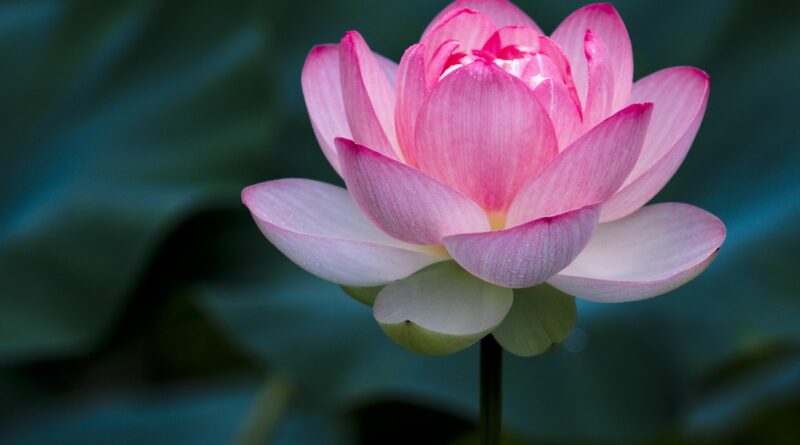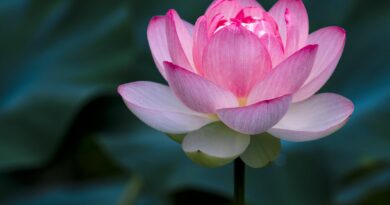Let Pleasure & Pain Fall Off The Plow
Let Pleasure & Pain Fall Off the Plow
June 1, 2018
Ordinarily, the mind goes bouncing back and forth between pain and sensual pleasure. Even though we may realize that sensual pleasures have their drawbacks, we keep going back, going back anyhow because we don’t see any other alternative to pain. When the Buddha taught what he called the middle way, it was to provide the alternative.
Part of the middle way is right concentration. It involves a strong sense of pleasure, but it’s a different kind of pleasure. It’s called the pleasure of form. Sensual pleasures come from sights, sounds, smells, tastes, and tactile sensations. The pleasure of form is more the pleasure that comes when the body, as felt from within, feels good regardless of what it’s touching outside. The various elements and various functions in the body seem to be working in harmony. When we get the mind in right concentration, that’s what we’re trying to induce: a sense that all the energies in the body are working together; the breath is flowing smoothly. If it’s not flowing smoothly yet, you work on it. That’s what directed thought and evaluation are for.
Directed thought is when you focus your thoughts on staying with the breath. Evaluation is asking yourself, “Does this feel good? If it feels good, how do I keep it up? If it doesn’t feel good, what do I change?” That’s the kind of thinking that enables the mind to settle into this sense of the body felt from within without pushing the energies out of balance.
But even here you have to be careful, because it’s very easy, once the breath gets comfortable, to forget about the breath and go for the pleasure. That turns into what Ajaan Lee would call delusion concentration, where you’re quiet and still but not really sure where you are. Or, even worse, it just turns into drowsiness. You just start falling asleep because you’ve forgotten your work, which was the directed thought and evaluation: to make sure that the breath stays right, which is something you can’t really let go of until everything is well balanced in the body, your awareness fills the body, the breath energy fills the body, and the mind feels solidly there.
So, in getting the mind to settle down, we’re dealing both with pleasure and pain as felt from within. And we have to learn how not to be overcome by either of them. The Buddha calls this being developed in body and developed in mind. Developed in body doesn’t mean you go out and you exercise a lot. It means that your mind isn’t easily overcome by the pleasure. Developed in mind means that the mind is not easily overcome by pain. This requires that when you encounter pains in the meditation, you have to learn how not to be knocked off course by them. Try to breathe through them.
But remember the Buddha’s instructions with regard to pain. The duty is not to make it go away. The duty is to comprehend it: in particular, to comprehend the mind’s relationship to the pain. So there’ll be a back and forth as the mind begins to settle down and encounters some pain and works with it, either breathing through it or just not focusing on that part of the body. Tell it, if the pain wants to be in the knee, “You can have the knee.” You’re not going to move in with it. That enables the mind to settle down even more. Then you can see more clearly how the mind is reacting to the pain or getting involved in the pain.
As for the pleasure, you’re going to have to remind yourself, “Stay with the breath. Stay with the body.” The pleasure is not the topic of the concentration. The pleasure is one of the by-products. It’ll do its work perfectly well without your wallowing in it. So you have to learn how to regard the pleasure as no big deal. It’s there and it’s going to be helpful. You can learn how to use it as a tool. You don’t make it the purpose of the meditation. And you have to remind yourself that as long as the mind can be overcome by pleasure, it’s going to be overcome by pain, because they both come from the same place.
If you hold on to those places—in other words, what the Buddha called the five aggregates: the form of your body as you feel it within; feelings; perceptions; mental fabrications, where you put thoughts together; and consciousness, your awareness at the senses, including the sense of the mind: If you hold on to these places, you’ll find that they can give pleasure and they can give pain. Seeing that they give pleasure, we hold on to them. They’re activities we like to engage in. In particular, we like to fantasize around our perceptions of something being entertaining or beautiful. Attractive. Interesting. These perceptions form the nucleus around which we start fabricating our thoughts. Then there’s a feeling of the pleasure that comes with those thoughts. But the thoughts can turn on you. They can lead to other thoughts that give pain. They’re all part of the same process.
So, if you hold on to these processes because of the pleasure they can give you, when they change, you find yourself holding on to pain. Even though nobody wants it, we hold on to it because we’re so used to holding on to these activities. If you don’t want to be overcome by the pain that comes from these activities, you have to learn how not to be overcome by the pleasure that comes from them, too.
As we get the mind settled in concentration, we’re engaging in these activities. We’re trying to get a sense of inhabiting the form of our body from within in a way that gives rise to a non-sensual feeling of pleasure. And there’s a perception that we’re holding here: the perception of how the breath runs in the body. There’s the fabrication of directed thought and evaluation as you’re dealing with the task of getting the mind to settle into the body well, so that the mind feels snug with the body and the body feels snug with the mind. Then there’s consciousness, the awareness of all these things.
We’re engaging in these activities, but we have to be careful not to focus on the pleasure that comes from them. We use the pleasure, we use these activities as tools. We have to stay focused on what we’re trying to do here, what the task at hand is, because we’re aiming at a well-being that goes beyond these activities. To do that, the mind has to be, as I said, well developed, just as the body has to be developed in the sense of not being overcome by pleasure. So we engage in these activities but we let the pleasure fall off us. We don’t try to gather it up.
Ajaan Lee’s image is plowing a field. As the dirt falls off the plow, you stick it in a bag. If you keep doing that, you’re going to get weighed down. That’s how we tend to deal with these activities. We stick our pleasure in the bag. We stick our pain in the bag. We think about how long the pain has been there. We think about how much longer it’s going to be there, especially if we’re going to sit for an hour. All of a sudden, the whole hour becomes an hour of pain. Even though it’s only one moment that you’re feeling the pain, you’ve already sketched out the rest of the hour as being a painful hour. And however long the pain’s been there in the past, you carry that around in your bag as well. No wonder you get weighed down. It’s because we have that bag in which we want to collect pleasure. Whatever comes off the plow, we stick it in the bag. Well, “whatever” sometimes turns out to be pain.
You have to learn how to let the soil fall off the plow by not gathering it up. The pleasures are there, but you don’t gather them up. The pain may be there, but you don’t gather it up. This way, the mind can stand apart from the pleasure and pain.
The pleasure of jhana is your alternative to going back and forth between indulgence in pleasure and indulgence in sensuality. Even here, though, you have to be careful about how you indulge in the pleasure that provides you with the alternative. You give rise to it. You nurture it. You take care of it. But you let it fall off the plow. You don’t put it in a bag. Whatever pains come up, you let them fall off. In training the mind in this way, you’ll ultimately find something that’s even better. But it requires that you be very precise in how you relate to pleasure and pain so that neither of them can take charge of the mind.



